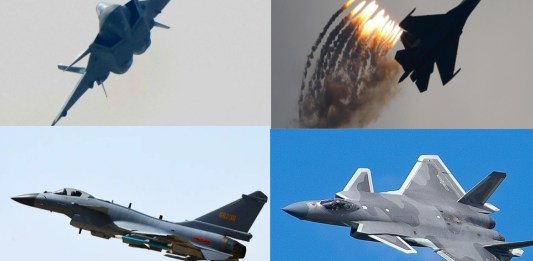Amid escalating tensions, the Indian Air Force (IAF) faces a formidable challenge from the technologically advanced People’s Liberation Army Air Force (PLAAF) over the Himalayas. With over 1200 warplanes, the IAF stands in a tight spot against the PLAAF's locally developed and manufactured arsenal.
The PLAAF's substantial size and technological superiority pose a significant threat, yet the IAF holds advantages in operational bases and geographical positioning, critical for supporting Indian Army operations and counteracting PLAAF strategies.
As tensions simmer along the Ladakh border, questions arise about the IAF's ability to sustain operations in challenging mountain terrain and a potentially expanding conflict scenario. An objective analysis of PLAAF capabilities is crucial to assess the threat posed to IAF operations.
Delving into PLAAF platforms, training, and likely tactics provides insights into the potential challenges faced by the IAF. From frontline fighters like the Su-35 and J-20 to strategic assets like the H-6 bombers and advanced cruise missiles, the PLAAF presents a multifaceted threat.
Examining PLAAF training, tactics, and operational exercises reveals a concerted effort to enhance combat readiness and adaptability against near-peer adversaries. However, challenges remain in achieving uniformity across units and maintaining tactical proficiency.
In assessing the PLAAF's potential tactics, the utilization of stealth capabilities, force multipliers like AWACS, and precision strike capabilities underscores the complexity of the threat environment faced by the IAF.
Despite PLAAF's advantages, constraints exist, such as terrain limitations, logistical challenges, and vulnerabilities in extended operations from high-altitude airbases. The IAF's familiarity with low-level flying and operational bases offers strategic advantages in countering PLAAF aggression.
As both air forces engage in a potential conflict scenario, the balance of power hinges on factors like training, motivation, and adaptability. While the IAF may face initial challenges, leveraging strategic acquisitions and operational expertise can bolster its resilience against PLAAF incursions.
In navigating the air power balance, the IAF must prioritize strategic investments in cruise missiles, EW equipment, and air defense systems to mitigate PLAAF advantages and uphold national security interests in the region.
